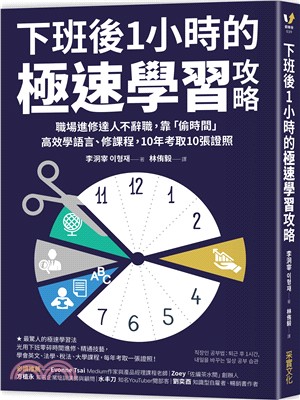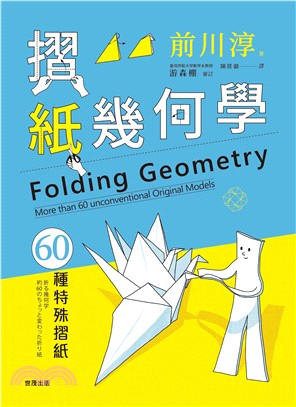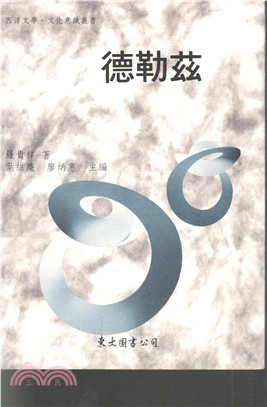Southern Hokkien:An Introduction(3volumes+3CD)
- 系列名:教科書
- ISBN13:9789863500490
- 出版社:臺大出版中心
- 作者:Bernhard Fuehrer; Yang Hsiu-fang
- 裝訂/頁數:平裝/776頁
- 規格:26cm*19cm*4.4cm (高/寬/厚)
- 出版日:2015/01/30
再享89折,單本省下148元
商品簡介
Southern Hokkien: An Introduction is a research-based textbook originally designed for non-heritage learners who acquired a reasonably good proficiency level of Mandarin and wish to learn the Southern Hokkien language outside its natural linguistic environment.
It uses a situation-based approach in which dialogues are designed to reflect scenes in real life rather than classroom situation. Grammar and vocabulary explanations follow a primarily contrastive approach, focussing on similarities and differences between Mandarin and Southern Hokkien. Though mainly based on dialect variants spoken in Taiwan, Southern Hokkien also includes references to dialect variants spoken in other Hokkien speaking areas.
The textbook is complemented by a number of excursions and explanatory comments which help not only to follow required linguistic rules and cultural conventions but also to gain a basic understanding of the reasons behind some of these rules and conventions.
作者簡介
Bernhard Fuehrer (Fu Xiong / Po3 Him5 傅熊) trained at National Taiwan University (BA) and in Vienna (PhD), and began learning Hokkien in the 1980s in Taipei. He is Professor of Sinology at the School of Oriental and African Studies in London.
Yang Hsiu-fang / Iun5 Siu3-hong1 楊秀芳 trained at National Taiwan University (PhD) where she is Professor at the Chinese Department and the Graduate Institute of Taiwan Literature. She has published extensively on Hokkien linguistics.
序
Preface
This textbook is divided into three volumes and consists of a total of twelve lessons. The first volume contains lessons one to six, lessons seven to twelve are in the second volume. In the third volume we provide additional material including transcripts of the dialogue sessions and song lyrics in mixed script. These transcripts are for reference purpose only and may be found useful by native speaker teachers. The learner is advised to use the romanized version of our dialogues in which we provide clear indication regarding the application of tone sandhi rules. The appended index refers to vocabulary explanations in the numbered sections of the textbook (01.01 to 12.07).
With the exception of lessons one, two and twelve, which have a different structure, all lessons include the following sections:
1. At least one dialogue scene: the dialogues reflect linguistic realities in that individual speakers exhibit dialectal idiosyncracies.
2. Notes on Vocabulary: words and expressions used in the dialogue(s) are printed in larger print. Example sentences and lexical explorations are in smaller print. In this section we indicate dialect variants where deemed appropriate.
3. Additional Vocabulary as used in the example sentences and elsewhere in the lesson.
4. Sentence Patterns in which the learner is required to identify suitable combinations of given options. In this part we only indicate isolation tones and expect the learner to apply tone sandhi rules.
5. Cloze Practice sections where a suitable option needs to be selected to fill in the blanks left in the sentences. In this part we also indicate isolation tones only and expect the learner to apply tone sandhi rules.
6. Listening and Reading Comprehension exercises that also serve as additional Southern Hokkien-English translation practice. In this part we also expect the learner to apply tone sandhi rules.
7. English-Southern Hokkien Translation exercises aim at expressing in Southern Hokkien the main idea behind a given sentence rather than providing literal translations.
8. Pearls of Wisdom: a selection of set phrases and popular sayings which are highly context-sensitive. Our translations are best perceived as approximations to be explored in class with the teacher.
A number of lessons include additional short outlines of relevant topics, revisions and material that may be found useful.
This textbook aims to serve a dual purpose:
1. Where used as an introduction to elementary spoken Southern Hokkien, the learner should focus on the vocabulary featured in the dialogue sections and applied in the Sentence Patterns, Listening and Reading Comprehension and Cloze Exercise sections. Most of this elementary vocabulary is marked in a slightly larger font in the Notes on Vocabulary. This primary lexicon will enable the learner to engage and function adequately in simple standard situations.
2. In addition to the elementary vocabulary the more ambitious learner will want to study the additional lexical explorations provided in the Notes on Vocabulary and printed in a slightly smaller font. Further to sentences that show the application of given vocabulary and related Southern Hokkien vocabulary, a considerable portion of our lexical explorations will be well known from Mandarin. The material provided in the Notes on Vocabulary aims at enabling the learner to develop a more comprehensive lexicon and accelerate the learning process by switching pronunciations from Mandarin to Southern Hokkien. By listing words and sayings more likely to be used by an elderly generation and hardly applied by some young native speakers, the additional material as well as the vocabulary sections occasionally expand into historical layers of Taiwanese Southern Hokkien.
主題書展
更多主題書展
更多書展本週66折
您曾經瀏覽過的商品
購物須知
為了保護您的權益,「三民網路書店」提供會員七日商品鑑賞期(收到商品為起始日)。
若要辦理退貨,請在商品鑑賞期內寄回,且商品必須是全新狀態與完整包裝(商品、附件、發票、隨貨贈品等)否則恕不接受退貨。

























